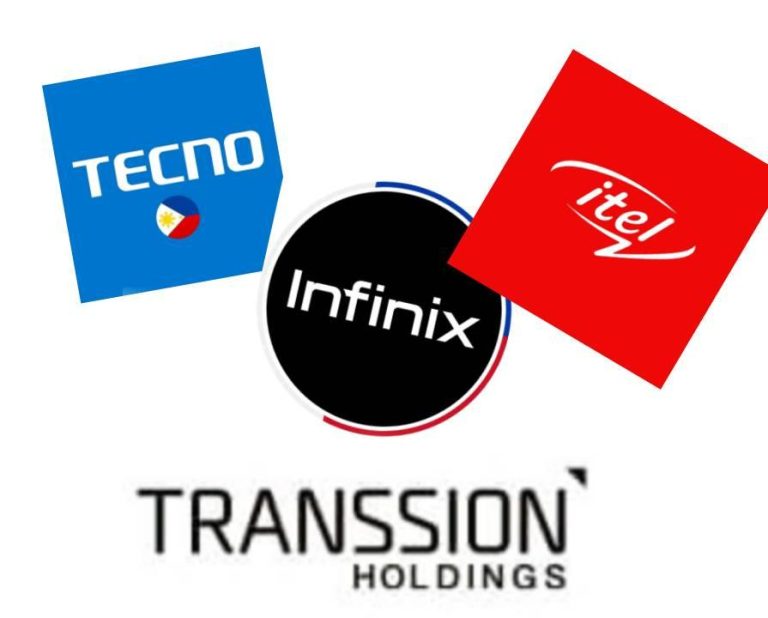PHILIPPINES – The Southeast Asia smartphone market is experiencing a surge, growing an impressive 11% year-over-year in Q3 2024. At the forefront of this growth is Transsion, the rising star of the regional smartphone landscape.
In a post on Twitter / X, IDC Asia/Pacific shares that OPPO and Samsung may have tied for the top spot in terms of market share, but it’s Transsion that’s stealing the show with an extraordinary 58% year-over-year growth. This rapid expansion underscores Transsion’s savvy strategy and ability to cater to the unique needs of Southeast Asian consumers.
Southeast Asia’s #smartphone market surged 11% YoY in Q3 2024! 📱📈#OPPO & #Samsung tie for the top spot, while #Transsion (+58%) leads growth. Financing plans & new launches, like OPPO’s A3x, drive demand.
See more #smartphone market insights: https://t.co/7BB6zyGGSj pic.twitter.com/B9CTbfF4uL— IDC Asia/Pacific (@IDCAP) November 21, 2024
A Key Driver: The Entry-Level Segment
A major factor behind Transsion’s success lies in its focus on the entry-level smartphone segment. The under-$100 price band now accounts for a whopping 30% of the Southeast Asian market, up from 20% just a year ago. Transsion, along with Xiaomi, has expertly tapped into this lucrative segment, offering affordable yet feature-packed devices that resonate with cost-conscious consumers.
Financing Plans and New Launches Fuel Demand
Beyond just product offerings, Transsion has also leveraged innovative financing plans and strategic new model launches to drive growth. The company’s partnerships with local telcos to offer flexible payment options have made its smartphones more accessible, particularly for first-time buyers.
Moreover, the success of OPPO’s A3x model, which emerged as the top-selling device in Q3, underscores Transsion’s ability to stay ahead of the curve with cutting-edge, value-for-money offerings. This delicate balance of affordability and performance has solidified Transsion’s position as a formidable force in the Southeast Asian smartphone arena.

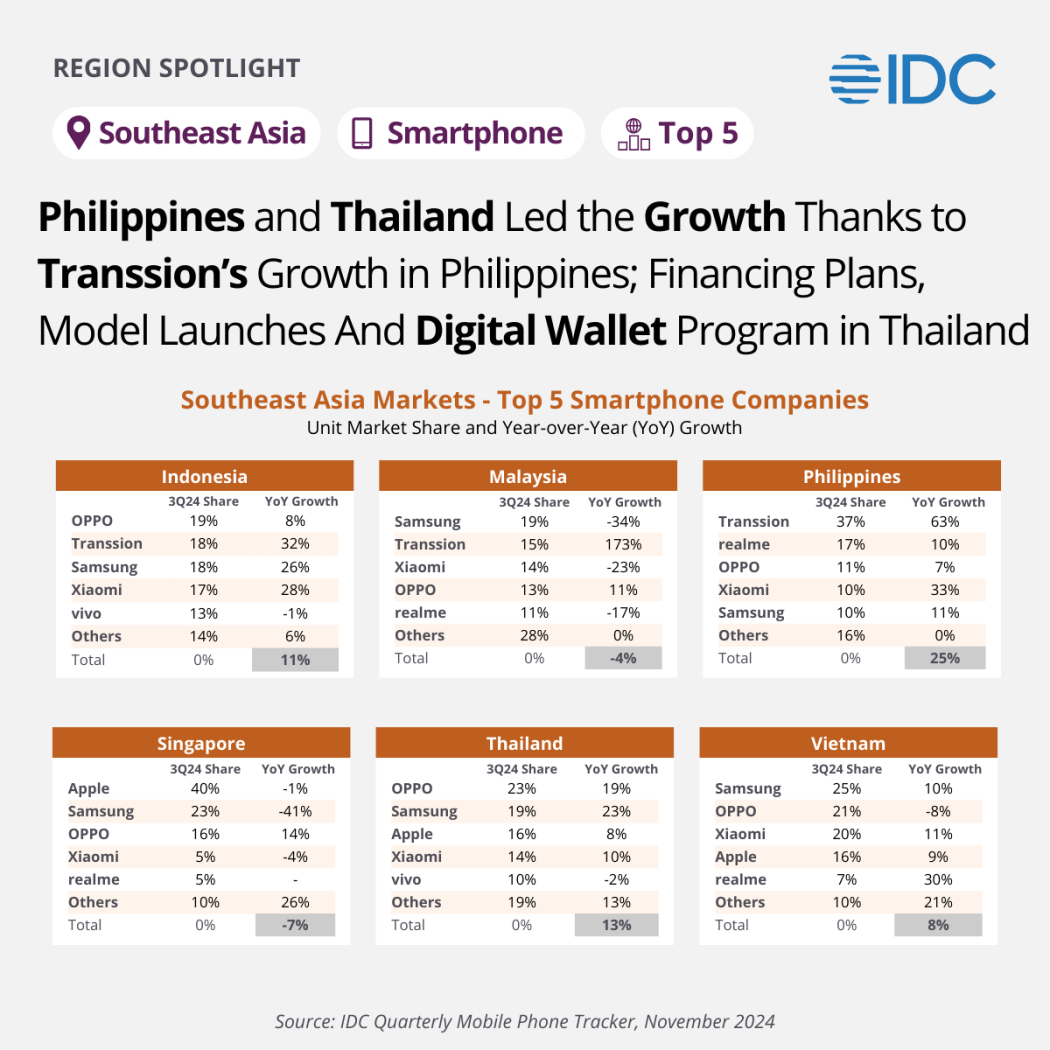
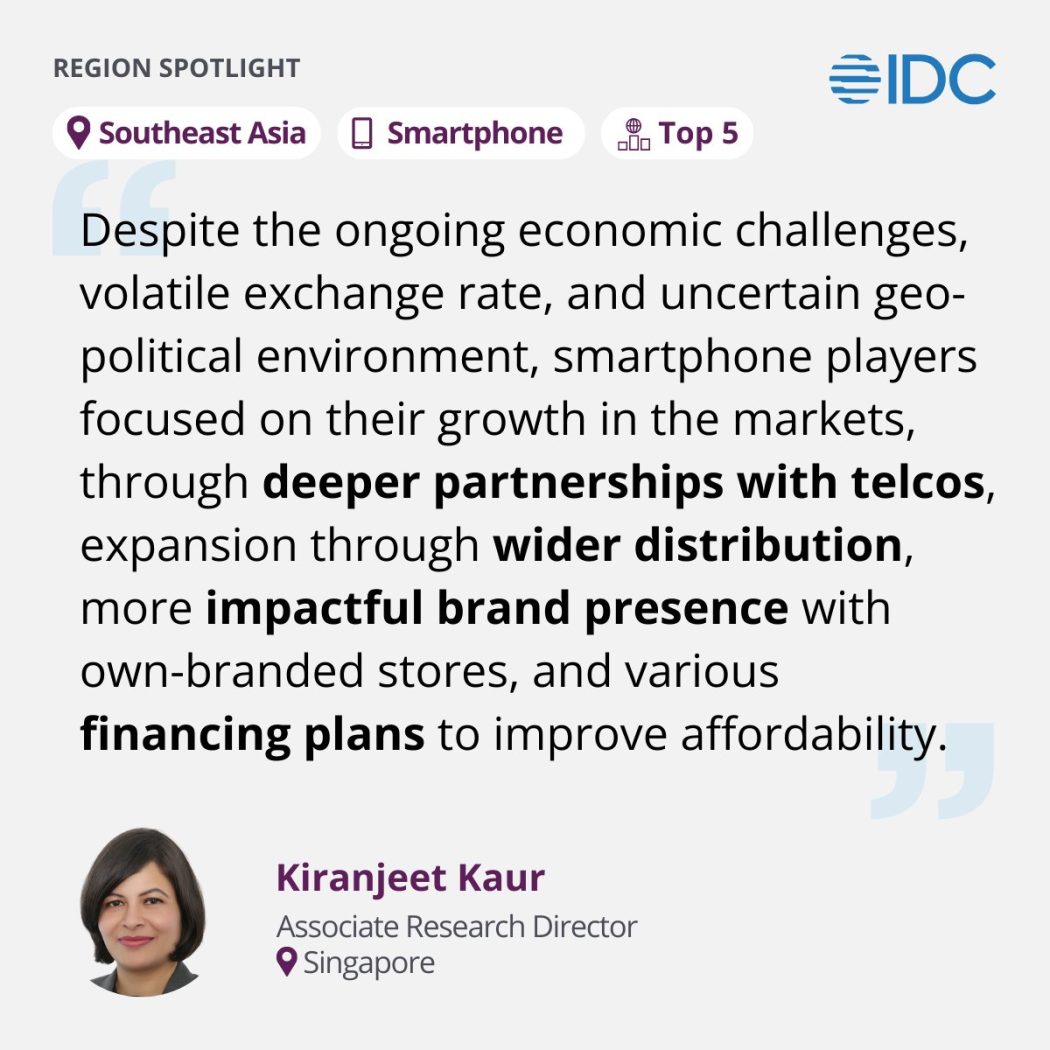
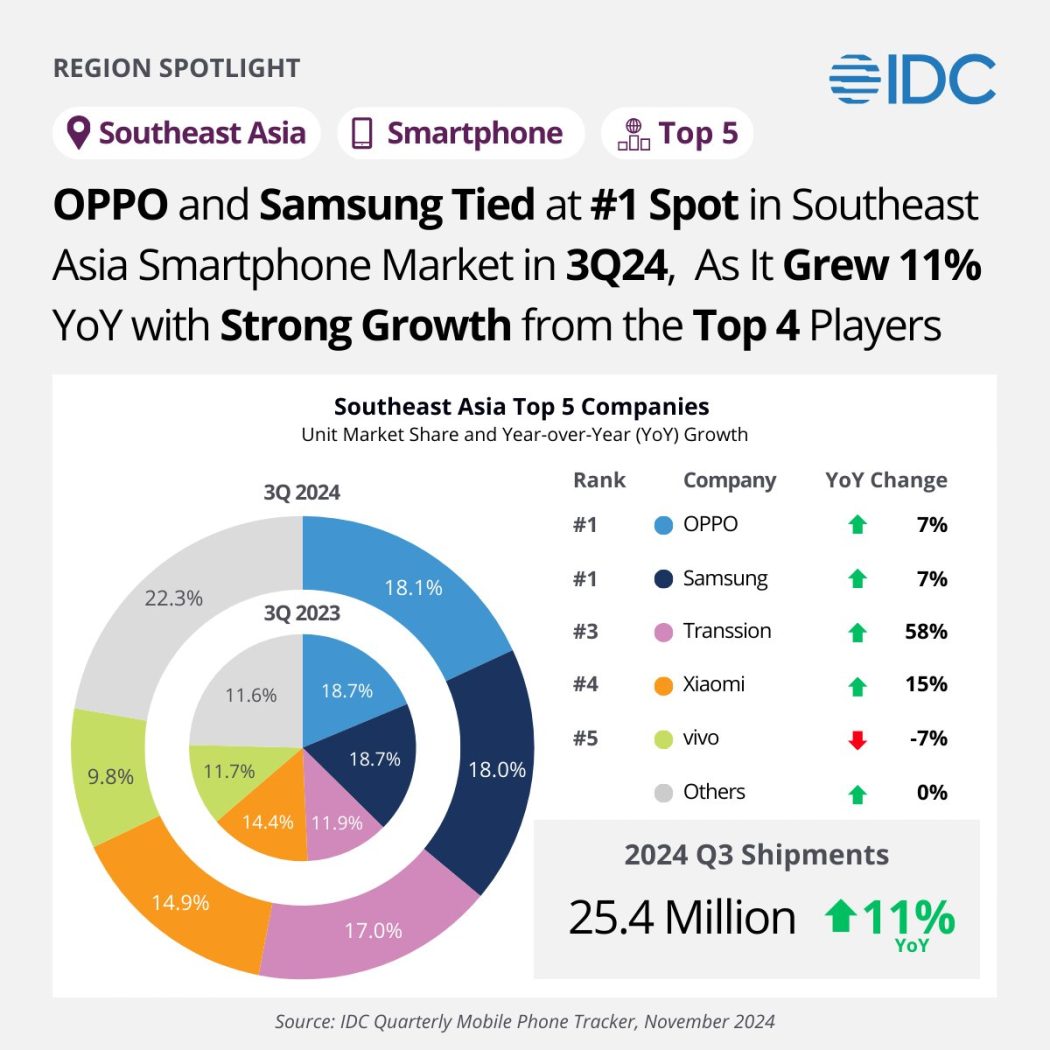
Leveraging Localization for Sustained Growth
Transsion’s triumph in Southeast Asia extends beyond just product and pricing strategies. The company’s deep understanding of local market dynamics and consumer preferences has allowed it to tailor its offerings to meet the unique needs of each country in the region.
By investing in localized marketing, after-sales support, and forging strong partnerships with local retailers, Transsion has managed to establish a strong, enduring presence across Southeast Asia. This localized approach has been instrumental in driving its meteoric rise and cementing its status as a dominant player in the region’s vibrant smartphone landscape.
As the Southeast Asian smartphone market continues to evolve, Transsion’s relentless focus on innovation, affordability, and localization will undoubtedly keep it at the forefront of this dynamic and rapidly growing industry.
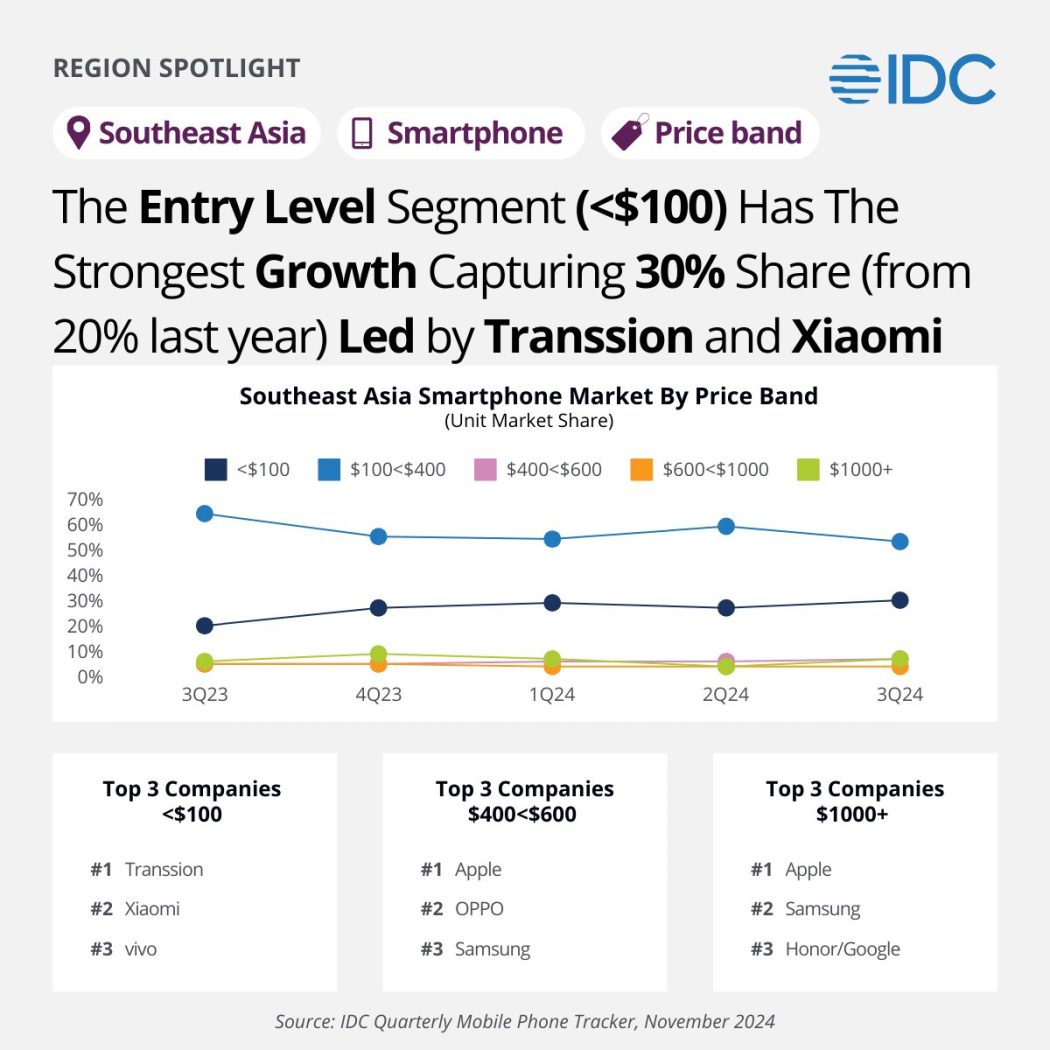
FAQs
Q: What is driving Transsion’s rapid growth in Southeast Asia?
A: Transsion’s success in Southeast Asia can be attributed to a few key factors:
- Focus on the entry-level and affordable smartphone segments, which now account for 30% of the regional market
- Tailored product offerings that cater to local consumer preferences across different Southeast Asian countries
- Innovative financing plans and partnerships with local telcos to improve smartphone accessibility
- Effective localization strategies, including localized marketing and strong relationships with regional retailers
Q: How does Transsion’s growth compare to other top smartphone brands in Southeast Asia?
A: According to the IDC data, Transsion has outpaced its rivals with an impressive 58% year-over-year growth in Q3 2024. This puts it ahead of other top players like OPPO and Samsung, which both grew at 7% during the same period. Transsion’s rapid ascent has allowed it to tie OPPO and Samsung for the #1 spot in the Southeast Asia smartphone market.
Q: What is the significance of Transsion’s strong performance in the entry-level segment?
A: The entry-level smartphone segment (under $100) has emerged as a critical battleground in Southeast Asia, now accounting for 30% of the regional market. Transsion’s ability to dominate this segment with its affordable yet feature-packed offerings has been a key driver of its overall growth. By catering to the budget-conscious consumers, Transsion has carved out a strong niche for itself and disrupted the competitive landscape.
Q: How has Transsion’s localization strategy contributed to its success in Southeast Asia?
A: Transsion’s deep understanding of local market dynamics and consumer preferences has been instrumental to its success. The company has invested heavily in localized marketing, after-sales support, and building strong partnerships with regional retailers. This localized approach has allowed Transsion to tailor its products and services to the unique needs of each Southeast Asian country, helping it establish a robust and enduring presence across the region.
Q: What is the outlook for Transsion’s continued growth in the Southeast Asia smartphone market?
A: With its strong momentum, innovative product pipeline, and effective localization strategies, Transsion is well-positioned to maintain its growth trajectory in the Southeast Asia smartphone market. As the region’s smartphone demand continues to evolve, Transsion’s ability to cater to the changing needs of cost-conscious consumers will be crucial to sustaining its market leadership.


